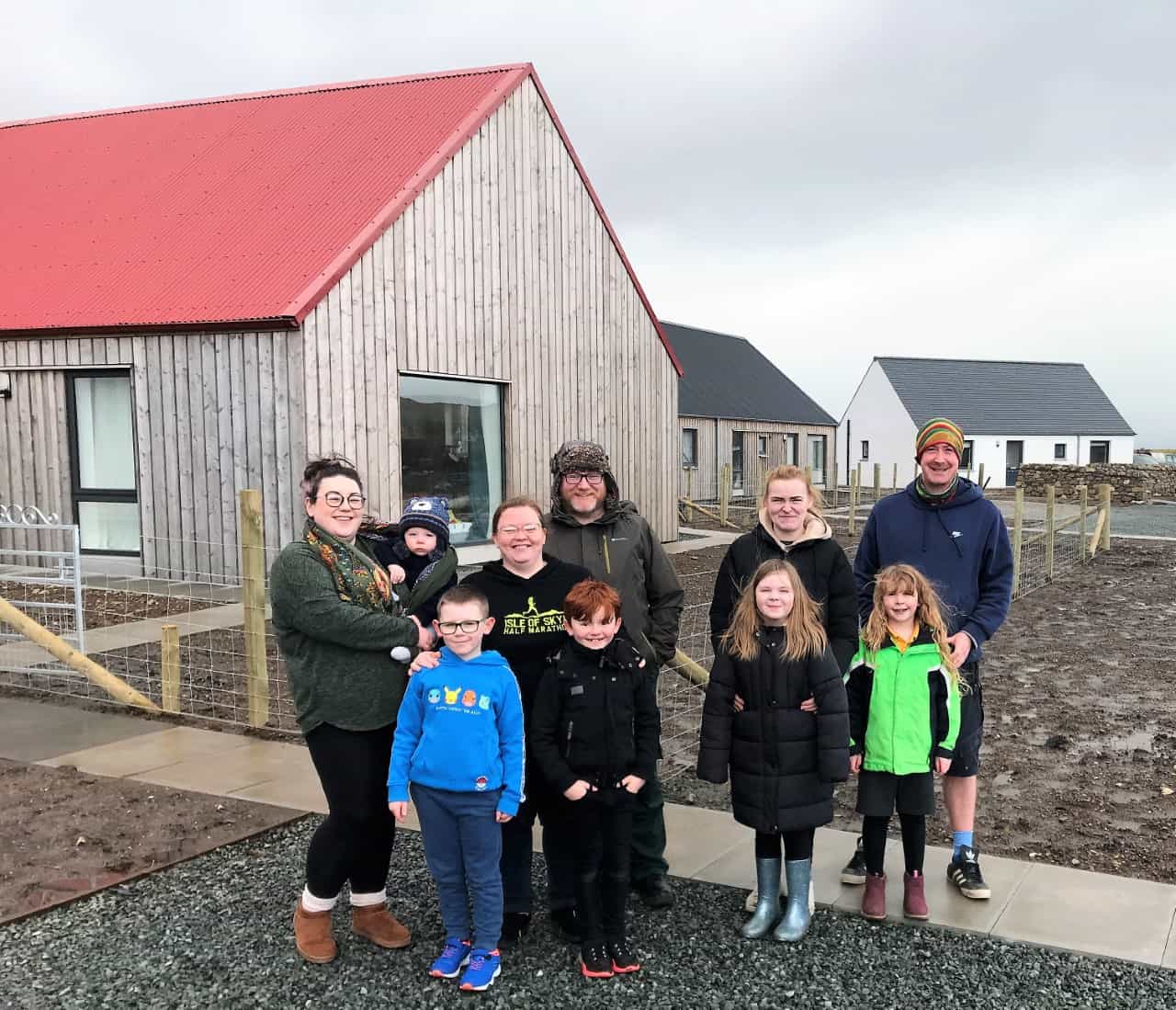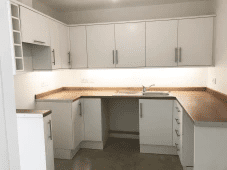This blog is part of a monthly series about community-led housing in Scotland, jointly written by Mike Staples, Chief Executive at South of Scotland Community Housing (SOSCH), and Ronnie MacRae, Chief Executive at Communities Housing Trust (CHT). Together, we’ve worked with hundreds of communities across Scotland, facilitating more than 1,000 affordable homes.
Two policies with huge public impacts will shortly be put before Holyrood: the Human Rights Bill, including the ‘right to adequate housing and to the continuous improvement of living conditions’ [1]; and National Planning Framework 4 (NPF4), which will direct planning across Scotland for the next 20 years [2].
Neither policy mentions the other, nor considers how they could complement each other in principle or practice. The draft of NPF4 references protecting human rights, but does not mention the ‘right to adequate housing’– a key component of the Human Rights Bill.
This is a missed opportunity.
The human rights principles of non-discrimination, participation, transparency and accountability [3] could apply equally to NPF4.
For us, a clear and obvious way to put this into practice is to plant a community-led approach firmly at the core of both policies.
Community-led development fulfils all four principles by requiring ongoing participation and engagement; collaborative working to fulfil local needs and aspirations; and clearly-defined benefits to protect housing stock legally for local communities, forever.
We therefore suggest prioritising community-led development as a human rights approach to NPF4.
The Human Rights Bill and NPF4 both speak of valuing Scottish residents’ knowledge and experiences, and we are presenting a tried and tested way to do just that.
Delivering housing as a human right through community-led models
We at CHT and SOSCH join Shelter, Alacho, CACHE, CIH Scotland, and the Scottish Human Rights Commission in supporting a human rights-based approach to housing.
By realising housing as a human right, Scotland could guarantee everyone has an adequate home.
This is a core shift. It would override the failures of a speculative housing market that leaves so many people behind; where second homes outprice local residents and workers, and truly affordable homes are few and far between; where homelessness is a byproduct of false scarcity; and increasing numbers of holiday homes are forcing outward migration of both urban centres and rural areas.
These are the very issues that community-led housing tackles. They are also issues our planning system should redress.
The community right to repopulation and the individual right to live where you choose – rights which a community-led approach supports in practice – are manifestations of housing as a human right.
Community-led housing is an exemplary model for a human-rights based approach to housing. It should be one of the central pillars of NPF4, as a planning framework for everyone, everywhere.
Bringing Human Rights to NPF4
There is a belief that the planning system is fair for all. It’s not.
Despite 97% of Scotland’s landmass being rural, the current draft of NPF4 is highly urban-centric.
This indicates to remote and rural communities that they are not equally included in Scotland’s future, despite the leadership they are showing in community-led development and long-term sustainability.
Are small communities and small developments getting a fair crack of the whip?
Lesley Riddoch argues that the current draft of NPF4 is “…a powerful blueprint for planning which ignores all the incredible efforts of Scotland’s rural communities and leaves them once again at the margins, fighting the system instead of having their success recognised and turned into a new officially endorsed, small-is-beautiful default.”
“Are the myriad plucky and often crowdfunded self-help developments by small communities still not enough to prove their worth to policy makers?”
With this plea we resoundingly say yes – they should be.
So what does human rights-based housing look like? What would prioritising community-led developments across Scotland accomplish? We believe local people answer these questions best. Communities have insights into the needs of their residents and strong motives to create happy, healthy, thriving places that a truly sustainable future requires.
CHT worked in partnership with the Staffin Community Trust to provide not only the first affordable homes in the crofting community for 23 years, but also workshop space, office and commercial space, and a new NHS health centre that replaced an old building unfit for purpose. Facing increasing tourism and a population dropping to 40, the homes of mixed tenures have helped retain six families in the village including eight children, which in turn will help keep the primary school open.


SOSCH supported the Moniaive Initiative’s redevelopment of a long-neglected house in the village to tackle the demand for housing for older people with mobility needs. Refurbishment created a new fully accessible layout, with a second bedroom, open plan kitchen, and wetroom. The house was let to an elderly resident with additional care needs . The community’s work allowed the resident to stay living in their own home—maintaining independence, whilst also getting support from family nearby.


Even the smallest community-led developments can have a large impact in remote and rural communities if they are meeting specific needs.
We’re keen that policymakers leading both the legislative human rights and planning agendas look to embed community-led development as a fair, effective, and respectful way to deliver the changes they are charged with.
We ask them to take the opportunity to consider the work of the community-led housing sector and place the knowledge and experiences of Scottish people front and centre in their policies.
As we proceed into the final stages of NPF4 public consultation, the values of non-discrimination, participation, transparency and accountability should ground our response. Look out for next month’s blog which will share a more in-depth review of NPF4 and community-led housing.
References:
[1] The Human Rights Bill is intended to be introduced at the current parliamentary session: https://www.gov.scot/news/next-step-towards-scottish-human-rights-bill/
[2] NPF4 closes for consultation at the end of March: https://consult.gov.scot/local-government-and-communities/draft-national-planning-framework-4/
[3] United Nations Committee on Economic, Social and Cultural Rights (CESCR) has defined seven general conditions that must be met to fully realise adequate housing, including security, affordability, location, and accessibility (among others). Cited from page 5 in Alacho report:
Young, G. (2021) The Right to Adequate Housing: Are we Focusing on What Matters? Available at: ALACHO-HR-PAPER.pdf (housingevidence.ac.uk) (Accessed 2 February 2022)